The Nashville Number System is a must-know tool for piano players of all genres. It helps you quickly transpose chords and communicate with other musicians. In this guide, we’ll explain the Nashville Number System as well as Roman Numeral Analysis. They both use a similar concept.
Table of Contents
1. The Nashville Number System for Piano
2. Roman Numeral Analysis
3. How to Use Numbers to Transpose Music
4. Advanced Symbols
5. BONUS! Figured Bass
When talking about music in terms of “1-5-6-4,” it can sound complicated, but it really isn’t. We’ll show you how this works, step by step!

 HOT TIP! If you’re new to chords, check out How to Play Piano Chords: Triads, 7ths, Chord Extensions and More. It’ll tell you everything you need to know about the backbone to piano music: chords!
HOT TIP! If you’re new to chords, check out How to Play Piano Chords: Triads, 7ths, Chord Extensions and More. It’ll tell you everything you need to know about the backbone to piano music: chords!
In the Nashville Number System, we assign a number to each degree of the scale.
Let’s take a look at C Major. C Major contains the notes C-D-E-F-G-A-B.
C is the first note of the scale, D is the second, and so on. Each note of the scale is called a scale degree.

We assign each scale degree a number, and to be honest, that’s the gist of the Nashville Number System! We use these numbers, named after scale degrees, as a shorthand to name chords. We’ll cover that in detail in a moment.
To hammer in this concept, let’s take a look at a minor key example.
The concept for A Melodic Minor is similar, but a few extra markings are required to accurately label some scale degrees.
If you can recall the rules for minor scales, a melodic scale is when the sixth and seventh notes are raised a half-step when we play the scale going up.
A Minor Melodic Scale
A-B-C-D-E-F#-G#
In A Minor, where by default there are no sharps and flats, this means we play F sharp and G sharp instead of F and G.
We can represent this in the Nashville Number System by writing #6 and #7.

Scale degrees are pretty straightforward, but how are they used? Let’s look at some naming conventions!
When someone says “play a ‘one chord’ in C Major,” this really means: “Play the chord built on the first scale degree of the C Major scale.”
If this concept sounds familiar, you’re on to something! Diatonic chords are chords built on each degree of the scale.
If you were going to play a triad shape on top of every note of the C Major scale, you’ll play this:

When we say something like “the 1-5-6-4” progression, this just means we’re moving from the 1 chord to the 5 chord, then the 6 chord and then the 4.

In this example, “-6” is used to identify a minor chord. Some people also write minor chords as “6m.”
The 1-5-6-4 progression is one of the most popular chord progressions ever. You’ll find it in pop songs everywhere.

Now, let’s take this one step further and talk about Roman Numeral Analysis. The advantage of using Roman numerals instead of Arabic numbers is that you can use uppercase and lowercase letters. We use uppercase letters to represent major chords and lowercase letters to represent minor chords.
As we’ve mentioned, “-6” and “6m” can be used to notate minor chords too, but this is less common.
Here are the diatonic chords of C Major in Roman Numeral Analysis notation.

*Sidenote: the little “o” symbol after the vii chord means this is a diminished chord. A diminished chord is a stack of minor thirds. A minor chord is a major third stacked on top of a minor third.
Interestingly, in major keys, the ii chord will always be minor, the V chord will always be major, and so on. Here are all the diatonic chords for D Major:

Neat, huh?
So what’s the purpose of learning all these symbols? Well, using numbers is a handy way to talk about music because you’re not tied to key this way.
If your band writes a song in C Major, then decides mid-way through practice to play it in F Major, the number system lets you quickly transpose a song from C Major to F Major.
For example, take our favorite 1-5-6-4 progression.
Here’s the progression in C Major.

And here’s the same progression, notated with the same numbers but transposed to F Major.

With Nashville numbers, you don’t have to go through the trouble of transposing everyone’s sheet music. You just need to write the chord chart in numbers, and then decide on the key later.
The Nashville system is very useful among, say, worship bands who must adjust their key according to the congregation’s needs.
Now that we’re comfortable discussing the Nashville Number System for piano, let’s explore it further. After all, we don’t just have major and minor chords. How about slash chords, inversions, and other stuff?
Inversions are notated in a similar way to slash chords. The number before the slash indicates the scale degree on which to build your chord. The number after the slash indicates the scale degree to be played with the left hand as a bass note.
As an example, take the first inversion of the C Major chord.
1/3
In the Roman Numeral Analysis system, inversions are notated quite differently. Scroll down to the figured bass section if you want to learn more.
Slash chords are notated the same way as inverted chords. So a G chord in C Major with an E in the bass would look like this: 5/3. (G is the fifth note of the C Major scale, and E is the third note of the C Major scale.)
To indicate a seventh chord, add a superscript “7” to your chord. So, in C Major, a dominant 7th (G7) chord will look like this: 57.
You may encounter other shorthand symbols such as…

Diamond
A diamond symbol means to let a chord ring out for the duration of the measure.
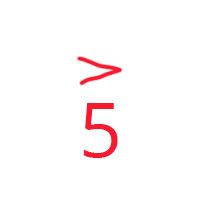
Arrow
Arrows symbolize a “push” in rhythm. “>” often means to play the chord an eighth note later, while “<” may mean playing the chord an eighth note earlier.
Underlines
If a chord changes mid-measure, this may be noted by underlining two chords that belong in the same measure.
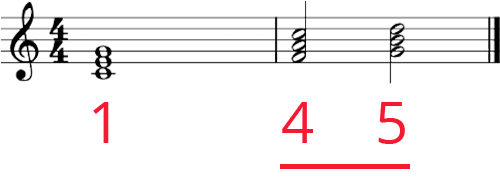
People may write their chord charts differently according to habit. If you’re not sure what something means, just ask whoever wrote the music! Then, it may be a good idea to discuss what conventions to take so everyone’s on the same page.
You can find some interesting examples of what chord charts by different musicians look like here and here.
Here’s a handy chart that summarizes what we’ve discussed. Note: this is all in C Major.
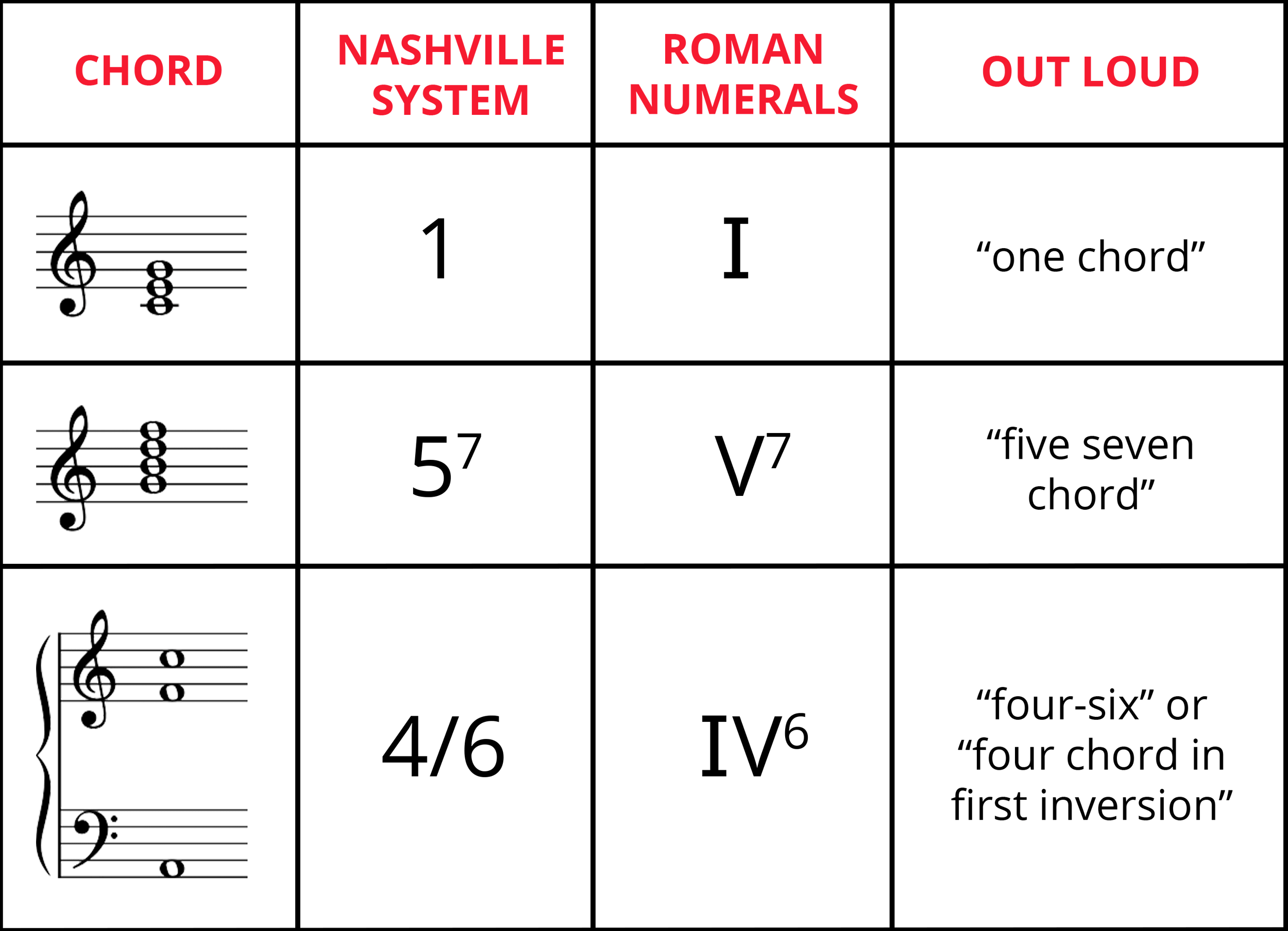
The Nashville Number System is similar to Figured Bass, which is a musical notation system that’s been used since the Baroque period.
Figured Bass is a shorthand used by musicians to improvise a bassline or accompaniment called basso continuo.
Here’s an example from the 1689 opera Dido and Aeneas by Henry Purcell.
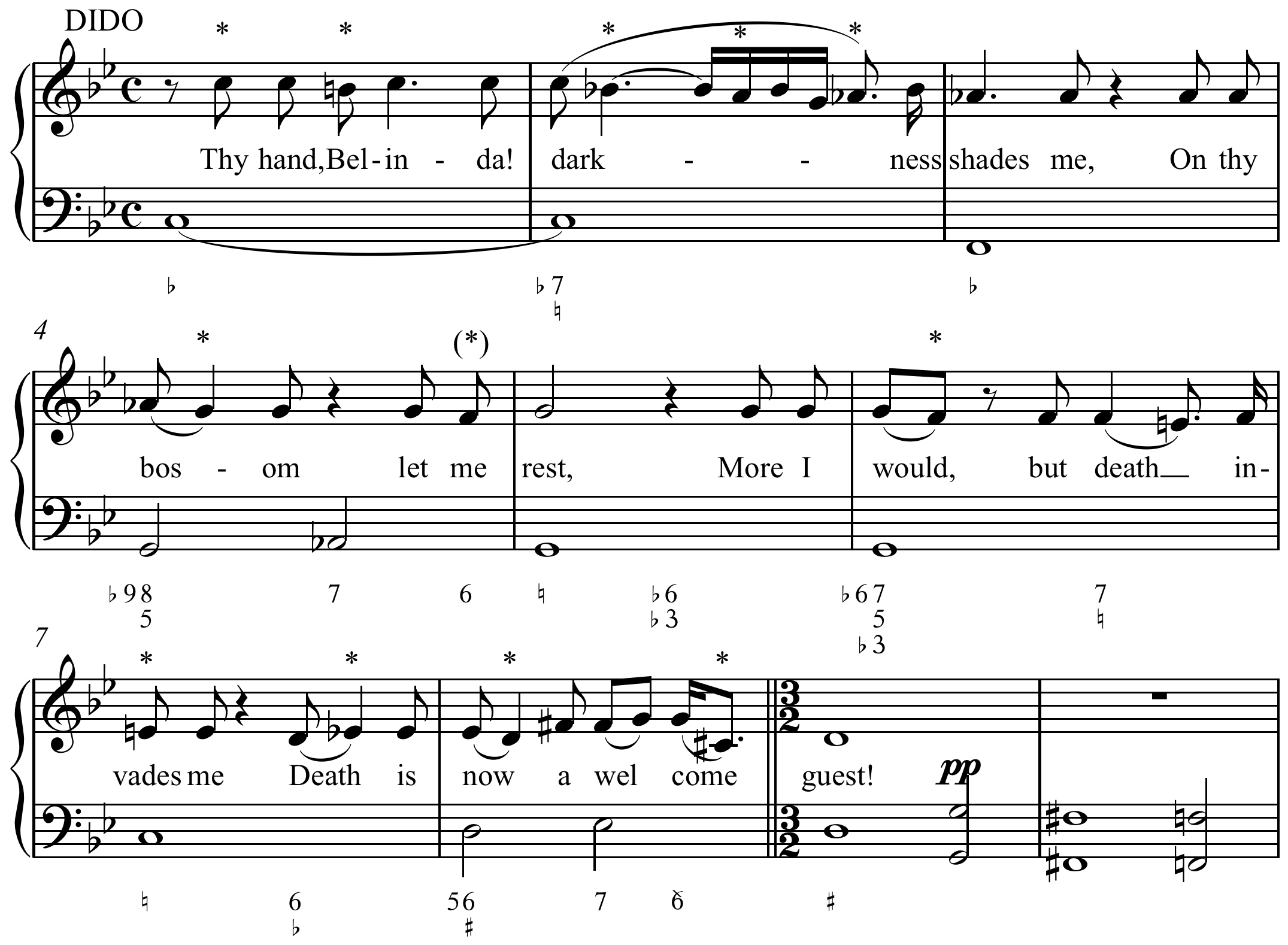
In general, numbers in Figured Bass indicate what notes above the supplied bass note should be played. However, Figured Bass often omits many notes that are taken as “givens.”
Figured bass is a little more complex than the Nashville shorthand, but the useful thing about this system is that you can very precisely express inversions.
Combined with Roman Numeral Analysis, the root, 1st inversion, and 2nd inversion of the I chord in C Major can be expressed like this:

“5” and “3” are omitted due to convention.
Up for a challenge? Let’s take a stab at deciphering the diatonic chords of the A minor melodic scale.

Wow, what a doozy! Okay, let’s break down III+ and #vio.
III+
The uppercase “III” means this is a major chord, but the story doesn’t end here. After all, C-E-G is a major chord, so what’s C-E-G#?
C-E-G# sounds unique because it contains an interval called an augmented 5th. The augmented 5th is one half-step “larger” than a typical perfect fifth. A perfect 5th from C is C-G, so sharping the G extends the interval by one half-step.
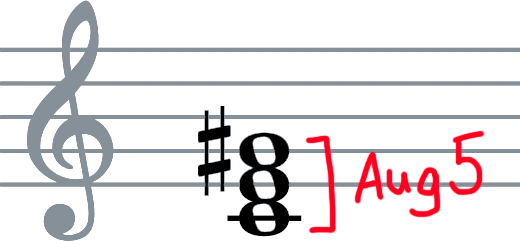
#vio
A similar concept can be applied to this chord, except we’re going in the opposite direction and narrowing the fifth. Without the F#, the interval between F and C would be a perfect fifth. But by sharping F, we reduce the distance by one half-step and create a diminished 5th.
The sharp in front of the vi chord just means our bottom note, F, is sharped.
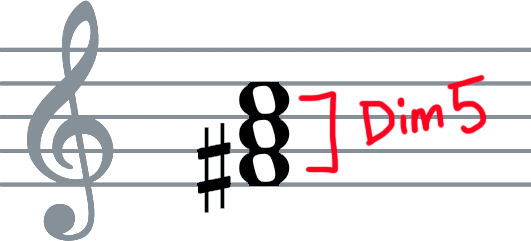
That’s it for now about the Nashville Number System! Every piano player should know this notation system. It’s simpler than standard notation, flexible to use, and gives you space to use your ear and improvise. The next time you write a chord chart, try using this system.
Charmaine Li is a Vancouver writer who has played piano for over 20 years. She holds an Associate diploma (ARCT) from the Royal Conservatory of Music and loves writing about the ways in which music—and music learning—affects the human experience. Charmaine manages The Note. Learn more about Charmaine here.
/marketing/pianote/lead-gen/digital-chords-and-scales/master-every-chord-bg.png)
/marketing/pianote/lead-gen/digital-chords-and-scales/Chords-scales-digital-logo.png)
Enter your email address to get your FREE E-Book instantly.
By signing up you'll also receive our ongoing free lessons and special offers. Don't worry, we value your privacy and you can unsubscribe at any time.
We use cookies for traffic data and advertising. Cookie Policy »